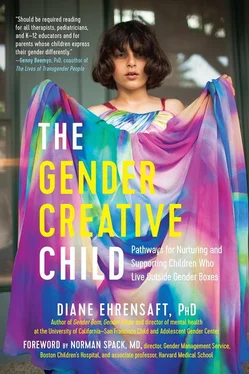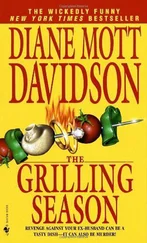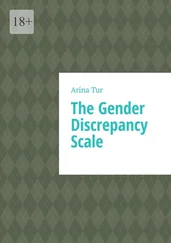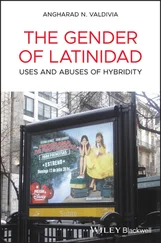I will come back to what we are learning about the biology of gender, but for now suffice it to say that nature clearly plays its hand, although we’re still not exactly sure how and why. Even in the girls with CAH, not all of them showed up later as gender-nonconforming or with cross-gender identifications; it was just more likely that they would. So, as we go along, we have to be humble enough to admit to knowing much more about the “what” of gender (how each of us puts our gender together, how it looks in a particular culture, and so forth) than the “why” of gender (the actual determinants that may make, for example, one twin transgender, but not the other, as well as, more generally speaking, cause only some people to be transgender). Throughout these pages I will be concentrating on the whats and hows—what gender is, how we put it together, how we help promote gender health. Over a century ago, to paraphrase the father of psychoanalysis, when Freud was asked to reflect on women’s development, he pretty much said, “If you want to understand women, ask the stars.” I’m not suggesting we turn to astrology to answer our questions about why one twin is trans and the other is not, why only a small minority of people will turn out to be transgender, and so forth; rather, I’m suggesting we be humble enough to admit, like Freud, that we really don’t know yet.
Some people get anxious when they hear someone like myself say about our youngest gender-nonconforming children, “These children just come to us that way.” They hear us as saying that gender is a fixed phenomenon and we are born with it, and that means it is set in nature’s stone rather than flowing with the rivers of time and experience. Au contraire; it simply means that nature has a hand to play in contributing to whether children will know themselves to be a boy, girl, or other, or embrace gender expressions that do not fit neatly into boy-girl boxes. In addition to the findings about CAH girls who have had high levels of prenatal androgens, identical twin studies have shown a higher incidence of transgender identities among monozygotic twins than among fraternal twins or nontwin siblings, suggesting a genetic link to the gender webs our children spin. Brain-imaging studies suggest that transgender women’s brains look similar to cisgender women’s brains, and the same is true for males as well, suggesting indeed that gender lies between our ears rather than between our legs. I find it particularly interesting that transgender men and women are more likely to be left-handed than the public at large, given that I always use the analogy that being left-handed as a variation on human functioning (one available to only about 10 percent of the world population) is comparable to gender nonconformity, particularly transgender identity (which also occurs in only a small percentage of the population). And now I discover a possible crossover between the two, only highlighting my belief in the creativity of both left-handedness (confession: I am one) and transgenderness, and the possibility that they may be linked in the brain in some way. To find out the particulars of these research studies, I refer you to the work on the biology of gender by my colleague Dr. Stephen Rosenthal, who provides an excellent summary of the research in the Journal of Clinical Endocrinology and Metabolism . Based on the studies he reviewed, Dr. Rosenthal proposes that the concept of gender identity is not simply a psychosocial construct, but “likely reflects a complex interplay of biologic, environmental, and cultural factors.” [22]Pre- and postnatal hormonal exposure and absorption, genetics, and brain formation appear to be leading candidates in the biological category.
Noticing what appears to be a sudden proliferation of trans and gender-expansive children and adults, some people are scratching their heads and asking, “What’s the deal here? Is there something in the drinking water?” Some who oppose gender outside of two boxes—male/female—argue that gender is a choice, and so you can choose not to be transgender, just as gay people are told that they can choose to be heterosexual if they want to. From those gender creative people who experience it from the inside and those allies who know it from the outside comes an outcry: “It is not a choice, it is who we are—male, female, or other. It just is.” Informed by all the children who have taught me what I know, I would say that there is no better answer than that: It just is. Yet to say it is not a choice does not mean that it is completely constitutional, determined by nature. It simply means that before we were born and then along our journey through life, a confluence of influences met, some flowing from nature, some from nurture, and some from the culture surrounding both the nature and the nurture. That is why I counsel gender specialists in training, along with parents of gender-nonconforming children, “Don’t bother asking children why they want to be a boy or girl or other, or why they think they are a boy or girl or other. They’ll just dodge the question or look at you as if you’re suffering from dementia. They can’t answer the question any more than you can about your own gender. It just is. That does not mean that our gender is innate—just that gender is our subjective experience, the results of our gender web–spinning at any cross-section of time. It may have looked different three years ago; it may look different three years from now. In most instances, our gender identity will be more stable over time, whereas our gender expressions may be as expansive and changing as the day is long. To embrace our gender creative children is to situate ourselves neither as an essentialist (things are a given in nature) nor an environmentalist (all that we are and know our genders to be is socially constructed), but as a transactionalist (we are an ever-evolving interweaving of biology and environment over the course of time). So, now let’s come back to the question at hand, “What’s your gender?”
Some years ago, I discovered that no matter what language and terminology we struggle to develop that will both reflect and be respectful of the multiple ways gender can present itself, the children will lead the way in carving out their own self-descriptions, categorizations, and assignations of gender. So, I began to make a list, given my propensity for list-making. The list consists of all the ways I have heard gender described by the children and youth who have come to see me, along with some items borrowed from social media, other people’s writing, and word on the street. By the time Gender Born, Gender Made was released, I had come up with quite an extensive list, shared in the pages of that book. But yet more have come my way since then, along with responses to the list itself. I’m recalling the words of a mother at a keynote address I gave at the Gender Creative Kids Workshop in Montreal. In the keynote I had presented my slide with my list of “Gender Beyond the Binary” categories. This woman strode up to the audience microphone and irately challenged me, “Aren’t you just creating more boxes to squeeze kids into?” I defensively answered that these categories were just schemas, always a work in progress, as I had already said in my talk, and that any child could traverse from one category to another without ever having to feel boxed in. But later, in the quiet of my hotel room, with time to reflect, I wondered whether she was right. Maybe I should really think about that. I try to be humble enough to admit to myself and others that there’s so much more to learn and we’re definitely going to make mistakes as we move toward making a better world for all our genders. Was I in error? Should I dispense with all my obsessive list-making? Is it oppressing rather than supporting the gender creative kids? I thought for a while; a few years later I am still thinking, and I’ve come up with a working response: The concept of gender expansiveness, which I fully embrace, promotes a concept of gender that has no borders or boundaries—it is infinite in its possibilities. And so I’ve continued to let the children lead the way in teaching me the ever-evolving set of terms they apply to themselves and to other people’s gender, albeit aware of the trap of falling back on binary boy-girl as our gender divining rods.
Читать дальше












